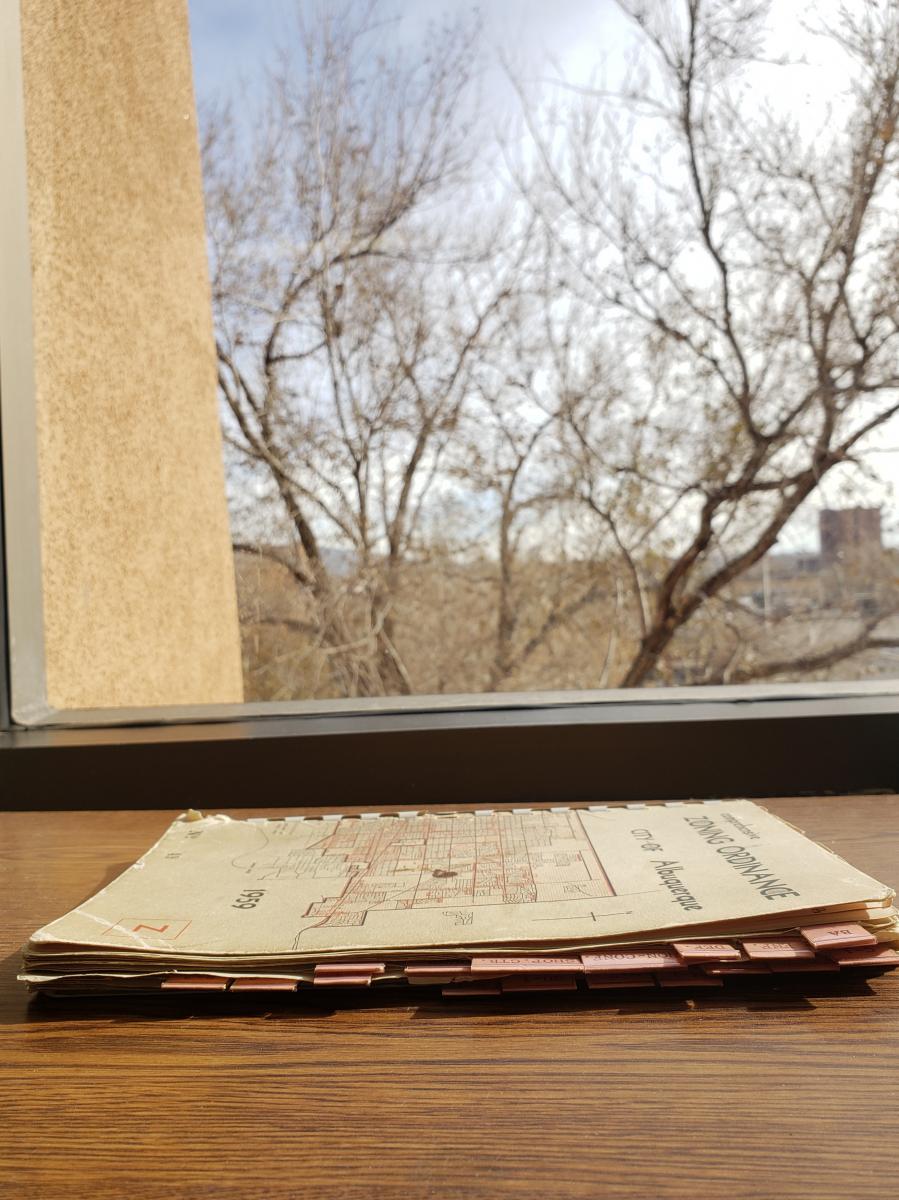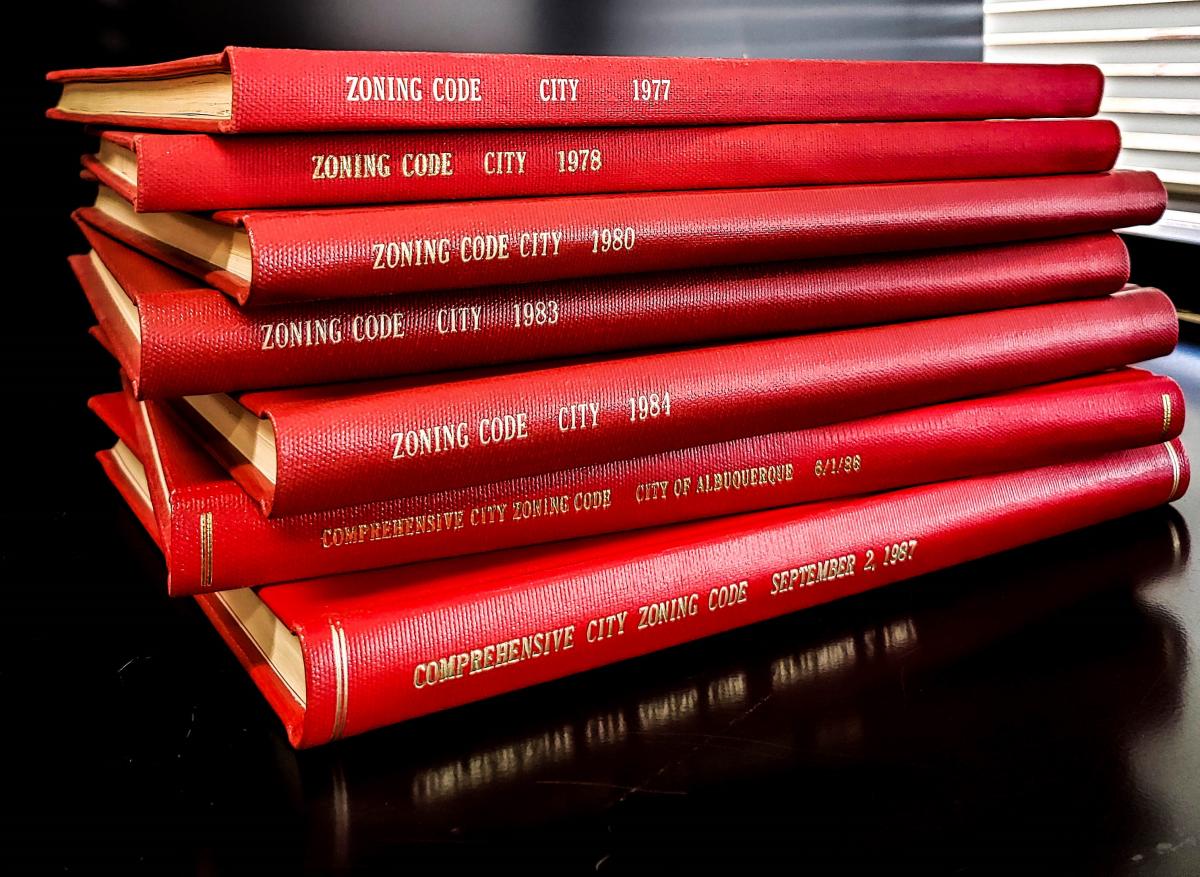1928, 1953, 1959, & 1965



Finally, on March 27, 1959, Albuquerque adopted its first valid zoning ordinance. That ordinance consisted of 58 pages in a 5” x 7” booklet, and established 14 zone categories.
In 1965, the City adopted a new zoning ordinance, which completely replaced the 1959 zoning code. Among the new regulations in the 1965 code were the first parking requirements for new buildings.
1975
In 1975, yet another new zoning code was approved by the City Council and took effect on January 1, 1976. This code established a number of new regulations for the first time, including:
- City-wide sign regulations
- Usable open space requirements for all multi-family development
- Landscaping requirements on the majority of non-single-family development.
The 1975 code established 22 zone categories, including two new special use zones to accommodate the redevelopment of older neighborhoods and the unique regulations necessary for Albuquerque’s urban areas, which at the time included Downtown, the University of Albuquerque, and Uptown, including Winrock and Coronado shopping centers.

Between 1976 and 2018, the Zoning Code was amended nearly 200 times. Landscaping regulations and air quality impact regulations were added, and many other regulations were implemented over time that influenced the administration of various parts of the Code. Major updates were added in 1990 and in 1994. No other city ordinance comes close to having been amended as often as the Zoning Code. This code, originally adopted as Ordinance 80-1975, was used until May 17, 2018.

During the same time, over 40 standalone sector development plans established more than 400 unique special use zones (i.e. SU-2 and SU-3 zones), and over 770 categories of SU-1 zones were created. These individual SU-1 zones governed individual properties via site plans. Design overlay zones and historic overlay zones were also adopted as standalone documents. By 2017, development in over 40% of the city was regulated by up to five additional standalone documents in addition to the Zoning Code.
2014-2016
In April 2014, the City Council adopted Resolution 14-46 (Enactment No. R-2014-022), which directed the Planning Department to update the Rank 1 policy document -- the Comprehensive Plan -- overhaul the City's land use and zoning framework, and update the City's technical and engineering standards related to development in the Development Process Manual.
In February 2015, the team kicked off the ABC-Z project ("Improving Place from Planning to Zoning") with public meetings and focus groups. Hundreds of meetings were held in locations throughout Albuquerque over the next three years to accomplish the tasks set out by Council.
2017-2018
On March 20, 2017, City Council adopted the updated Comprehensive Plan, and the plan took effect on April 12, 2017.
Later that year, on November 17, 2017, City Council adopted the Integrated Development Ordinance (IDO) through Ordinance 2017-49 (O-17-49). Council also adopted two sets of 6-month amendments. The IDO completely replaced the 1975 Zoning Code, carried over regulations from over 40 sector development plans, and incorporated and updated the Subdivision Ordinance, Landmarks and Urban Conservation Ordinance, and Airport Zoning Ordinance. The IDO first took effect on May 17, 2018.
The IDO includes 19 zone districts:
- 6 Residential zones
- 5 Mixed-use zones
- 6 Non-residential zones
- 2 Planned Development zones
Instead of relying on unique zones to protect special places, the IDO introduces several new tools that tailor regulations for small areas:
- Character Protection Overlay (CPO) zones
- Historic Protection Overlay (HPO) zones
- View Protection Overlay (VPO) zones,
- use-specific standards
- general regulations for mapped small areas
Building design standards were added for multi-family and non-residential development, and design standards and use restrictions were added for development next to Major Public Open Space.
2019 to Present
 Present
Present
IDO is now on an annual update schedule. This schedule enables proactive work by the City Council to address necessary changes, and stakeholders and the general public will know when to pay attention in order to review and testify about proposed changes.

